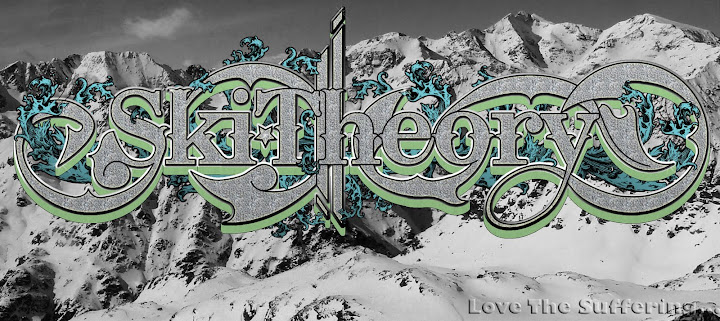The rope in the ultra light crevasse rescue kit is not really designed for roping up due to it's incredibly thin and static characteristics. I interchange three other ropes with the kit, and add ice screws, pitons, pickets, etc, when necessary. I can easily swap the harness, a Camp XLH, to something more appropriate for climbing or roping up with. Either way the kit stays super light, and is even more light when divided up between partners, when gear loads allow so. For speed traverses, through unknown terrain, or heavily glaciated areas I have an 8mm Beal Rando rope (right), in 30m, and an added ice screw just in case.
Keeping every bit of gear as light as possible is so essential to the success of every trip. Keeping your gear organized, and making sure you and your partners are safe, is important to staying alive a long time in the mountains and ensuring you get after it like Fred Beckey.








Alex, have you actually tried to haul someone up on 5.5mm spectra? Any suggestions on doing so? Does a standard z-setup work? Does a prussik hold on 5.5mm? Obviously such a thin diameter precludes using pulleys or Tiblocs. Questions, questions.
ReplyDeleteThe prussik is tricky on 5.5mm Spectra. I've been using a Klemheist as my friction knot, and also use the Dyneema runnners instead of cord. The 5.5mm Spectra is way different than your regular climbing rope. The actual setup of the rescue system, works the same as you would normally set it up, but you must be mindful to practice it first. And yes it is harder, but I only bring this kit if I am almost positive no one is going in a hole, its there just in case. Otherwise I will swap the 5.5mm spectra cord with an 8mm Rando Rope, and may even go longer.
ReplyDeleteAs for pulleys or Tiblocs, those are to heavy to lugging around with such a light kit. A pulley would help, but a Tibloc will only work on ropes that are 8-11mm so thats out of the question.
I have wrestled with the length of the cord for years now. It seems to me that these days it's more about the down than the up. Way back the equipment was marginal, so people roped up more going down. Now the gear can make you travel at high speeds with control. A 30 meter rope doesn't do much on a unroped skier taking a header into a hole. As well how many ropes per team? Who ever is free skiing down better make sure they're not going for a fall... As for the spectra, It's good thought, but suck it up and put a real rope in your pack and train a little harder... If your almost postive no one is going in , someone just might. OH yeah, you forgot the steel cramps. some people for go this but when it comes to the real rescue, the aluminum will limit your manouverbility. I love going light but after two real rescues in remote locations its worth the extra weight. With out a longer cord and steel cramps i'd be hauling a body instead of a buddy. By the way your blog is great keep up the good work!
ReplyDeleteThanks for your input. You have very valid points, and I think its important to note that I do not use this as my only rope rescue kit. There are many different systems, many of them which I carry, with a "real" rope. I do have a few different ropes other than the spectra kit, a 30m 8mm, a 50m, and a 60m, each for different types of terrain and part sizes. This also goes for each single piece of equipment, from light to heavy duty advantages, and assorted gear.
ReplyDeleteSafety is the bottom line, and I agree with you, backcountry users have to be prepared for the absolute worst case scenario. When deciding on any kind of system, people should test it outside, in real conditions, with real people, not inside in the comfort of the living room.
Thanks for the great comments, glad to see there are lots of people out there thinking about safety, while having fun in the mountains!
Alex, interesting writeup. The biggest question for me in a lighweight crevasse setup was the anchors. What do you bring for anchors? Use skis, and shovel, or also bring picket and axe?
ReplyDeleteThanks, Carl
Hey Carl,
ReplyDeleteIn a rescue situation I would definitely use my skis as an anchor. The only time in which I may not, would be a lack of snow, and would use an V-Thread anchor with screws on the glacier. There are lots of great ways to build anchors in snow (with a bit of skill and knowledge), such as stuff sacks filled with snow, rocks, and really anything you can bury. I should re-post a new article, as I've shaved the kit down even more, and there have been some cool gadget's for ultralight rescue put on the market now. Thanks for reading!
Alex,
ReplyDeleteThank you for your response. Do you carry an ultralight stuff sack for that situation? It would be excellent if you could include your new kit and a detailed explanation of some of your anchor strategies.
The stuff sack, I should clarify, is not something I would regard as the best anchor for crevasse rescue. More of an improvised anchor for rappelling. To learn all the anchor strategies and each one's uses and specific requirements, I would recommend taking a crevasse rescue and/or anchor building course. I'll try to be as detailed as I can when I post the new article though.
ReplyDelete